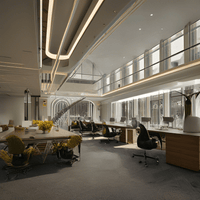How to Use LED Pendant Lighting to Create a Modern and Efficient Laboratory
Navigation
Introduction
LED pendant lights are an excellent choice for the laboratory. These suspended fixtures provide direct downward lighting that can be precisely positioned over work areas. LED pendants are energy-efficient, long-lasting, and available in a range of stylish designs. With the right layout and placement, LED pendant lighting creates a comfortable and productive environment for detailed lab work.
The key benefits of LED pendant lights include energy savings, minimal maintenance, and sleek aesthetics. LEDs consume up to 80% less power compared to incandescent or fluorescent lighting. Their 50,000-hour rated lifespan also avoids frequent bulb changes. And the variety of shapes, sizes, and finishes enables pendant lights to enhance lab decor. Carefully spaced pendants provide uniform light coverage without shadows or glare.
For labs, linear LED pendants work well for general ambient lighting over open workspaces. Adjustable height and directional models allow ideal positioning over counters and workstations. Round or square pendants can highlight sinks, fume hoods, and other fixed equipment.

Tips on Creating an Efficient Lighting Scheme and Optimal Pendant Placement
1. Creating a Modern, Efficient Laboratory Lighting Scheme
An effective laboratory lighting scheme combines general ambient lighting with task and accent lighting. This layered approach provides both workspace illumination and specialized visibility for critical tasks.
General lighting comes from linear LED pendants spaced evenly over work zones. You can supplement this with task lighting from directional pendants over counters, fume hoods, and sinks. Finally, accent pendants spotlight display zones, access points, or hazardous areas. You must follow lighting guidelines for recommended lumen levels and mounting heights in each zone.
This multi-level scheme eliminates shadows and prevents visual fatigue. For a modern look, you can choose slender linear or globe pendants with white or metallic finishes. The result is a professional lighting design perfect for contemporary labs.
2. Using LED Pendant Lighting to Improve Safety and Productivity
The unique properties of LED pendant lighting enhance visibility for safer, more focused lab work.
With directional lighting from above, LED pendants minimize glare on shiny countertops. This prevents eye strain for extended use of microscopes or other equipment. The cool, white light also accurately renders colors for identifying samples or chemicals.
The even illumination and accurate color temperature provided by LED pendants allow technicians to clearly see fine details. This helps prevent errors in handling hazardous materials or performing complex procedures. And with no flickering or humming, LEDs create a comfortable workspace.
The energy efficiency and 50,000-hour lifespan of LED pendants also minimize interruptions and maintenance costs. Labs can stay running productively with lower utility bills and almost no re-lamping needed.
3. Choosing the Right LED Pendant Lighting Fixtures
When selecting LED pendants, you need to consider lumen output, efficiency, and design style. What you ought to look for is those energy-saving LEDs with warm or neutral color temperatures around 3000-4000K. The color rendering index (CRI) should be 90+ to properly show colors.
For versatility, you can choose height-adjustable pendants with rotating or directional shades. Linear LED pendants work well for general lighting. Round or square pendants better focus light on fixed stations. Finally, you can opt for durable finishes like powder-coated metals resistant to moisture, impacts, and chemicals.
4. Placing LED Pendant Lighting Fixtures
Proper placement is key to maximizing pendant performance. You need to follow general lighting guidelines for height and spacing based on room size. For task lighting, you can position directional pendants directly over workstations at 1-2 feet above the surface. Please stagger the alignment to avoid shadows.
Over open-concept areas, suspended cables let you align LED linear pendants over aisles and walkways. You can place accent pendants strategically over lab entryways, hazardous material storage, emergency washing stations, and other critical spots per lighting codes. Proper LED pendant placement provides both visual appeal and optimal lighting for a modern, efficient lab.
Conclusion
With strategic placement and the right fixtures, LED pendant lighting enhances both aesthetics and functionality in contemporary labs. Following guidelines for modern lighting schemes is necessary to create a professional, efficient, and safe workspace. You can also consult with lighting specialists for help selecting and laying out pendant fixtures tailored to your lab's unique needs and activities. Investing in quality LED pendants will provide ideal illumination and low operating costs for years to come.



